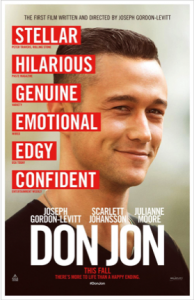By Reid Rosefelt
When you finish reading this post you will possess the key to becoming a mighty internet power user.
For no charge, I’m going to share a huge breakthrough I made. That’s the kind of guy I am.
 It all started just as the Chris Christie Bridge-ghazi scandal was gathering steam. Like many, I googled the besieged Governor to see if there were any new developments.
It all started just as the Chris Christie Bridge-ghazi scandal was gathering steam. Like many, I googled the besieged Governor to see if there were any new developments.
One day, I saw something that surprised me: on the first page, right under CBS News, MSNBC, Chicago Tribune, the Office of the New Jersey Governor, Christie’s Wikipedia entry, the Chicago Tribune again, and the Washington Post, was a link to something from my friend, celebrated indie film man Ira Deutchman. “Wow,” I thought. “Ira must have generated something pretty big to generate a search engine smasheroo like that.” As you might imagine, I was on pins and needles to find out what Ira had come up with.



 If you aren’t shooting in 4K (aka Ultra HD or UHD), you’re two years late. In two years from now any film you shot in HD will be as obsolete as the stuff you shot in SD. But don’t take my word for it, and expect that within a few weeks or sooner, there will be new advances announced.
If you aren’t shooting in 4K (aka Ultra HD or UHD), you’re two years late. In two years from now any film you shot in HD will be as obsolete as the stuff you shot in SD. But don’t take my word for it, and expect that within a few weeks or sooner, there will be new advances announced. 

 Walking down Main Street of the Sundance film festival this year, it felt like there was an ever-growing gap between the east and the west side of the street. Hollywood and Independent seem to be growing further and further apart, making the Sundance film festival, and other L.A. hyped festivals like it, such an increasingly awkward phenomena. You have a festival director who wants to keep the slate as Independent, fresh, and intriguing as possible, an audience that attends who has come to expect way more “accessible” stories, and big biz owned media companies like Variety claiming the festival “suffered from too much Brooklyn” and squawking at 2 million dollar advance tags for indie films in today’s market. We feel for you Mr. Redford, we do…but you created this monster, and now it ‘s become a near perfect representation of the dichotomy within the film Industry.
Walking down Main Street of the Sundance film festival this year, it felt like there was an ever-growing gap between the east and the west side of the street. Hollywood and Independent seem to be growing further and further apart, making the Sundance film festival, and other L.A. hyped festivals like it, such an increasingly awkward phenomena. You have a festival director who wants to keep the slate as Independent, fresh, and intriguing as possible, an audience that attends who has come to expect way more “accessible” stories, and big biz owned media companies like Variety claiming the festival “suffered from too much Brooklyn” and squawking at 2 million dollar advance tags for indie films in today’s market. We feel for you Mr. Redford, we do…but you created this monster, and now it ‘s become a near perfect representation of the dichotomy within the film Industry.  It’s important that we understand the basics of what we call the movie poster. The standard movie poster has become a vertical 27” x 40” design originally made to fit inside a theater’s display. [This ignores lobby cards, window cards, the insert, the half-sheet, and the 3 and 6-sheets as well as the European and Asian anomalies.
It’s important that we understand the basics of what we call the movie poster. The standard movie poster has become a vertical 27” x 40” design originally made to fit inside a theater’s display. [This ignores lobby cards, window cards, the insert, the half-sheet, and the 3 and 6-sheets as well as the European and Asian anomalies. 